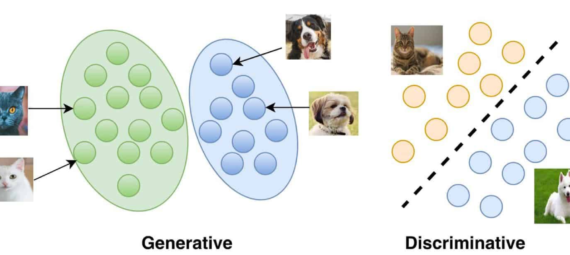Introduction: In the realm of machine learning and statistics, two fundamental analytical approaches—discriminative and generative—play pivotal roles in shaping models and decision-making processes. In this blog post, we will delve into the characteristics of discriminative and generative approaches, highlighting their key differences and use cases.
Discriminative Models:
Definition: Discriminative models aim to learn the boundary between different classes or categories directly. These models focus on capturing the conditional probability distribution of the output variable given the input.
Key Characteristics:
- Decision Boundary: Discriminative models learn to draw decision boundaries between classes.
- Focus: Primarily concerned with predicting the output labels.
- Use Cases: Ideal for classification tasks and tasks where the decision boundary is essential.
Popular Discriminative Models:
- Logistic Regression
- Support Vector Machines (SVM)
- Neural Networks (for classification)
Generative Models:
Definition: Generative models focus on learning the joint probability distribution of the input features and the output variable. These models can generate new samples that resemble the training data.
Key Characteristics:
- Data Generation: Generative models can generate new samples that resemble the training data.
- Complexity: Typically more complex than discriminative models.
- Use Cases: Useful for tasks involving data generation, such as image and text generation, and tasks where understanding the underlying data distribution is crucial.
Popular Generative Models:
- Gaussian Mixture Models (GMM)
- Hidden Markov Models (HMM)
- Variational Autoencoders (VAE)
- Generative Adversarial Networks (GAN)
Differences Between Discriminative and Generative Models:
| Aspect | Discriminative Models | Generative Models |
|---|---|---|
| Objective | Learn decision boundaries | Learn joint probability distribution |
| Focus | Class labels | Data generation |
| Use Cases | Classification tasks | Data generation, image and text generation |
| Decision Boundary | Directly learns the boundary | Implicitly captures boundary by modeling data distribution |
| Complexity | Simpler | Typically more complex |
| Training Data | Less data required | More data often required |
| Examples | Logistic Regression, SVM, Neural Networks | GMM, HMM, VAE, GAN |
Conclusion:
In summary, discriminative and generative approaches represent two distinct philosophies in analytical modeling. Discriminative models excel at classification tasks by directly learning decision boundaries, while generative models focus on understanding the underlying data distribution and can generate new samples. The choice between discriminative and generative models depends on the specific goals of a given task, with discriminative models being preferred for straightforward classification tasks and generative models being suitable for tasks involving data generation or a deeper understanding of the data distribution. Understanding the nuances of these approaches is essential for selecting the right model for a given problem.



